
Ethnic style in interior design - the romance of travel and exotic countries
Ethnic style in interior design, also known as folk or ethnic style, is a design direction characterized by the stylization of living spaces in the traditions of a particular people in pre-industrial times. There are many regions with interesting and unique household features, which is why ethnic style in interior design is incredibly diverse. It is a great way to give the atmosphere individuality without sacrificing comfort and environmental friendliness.
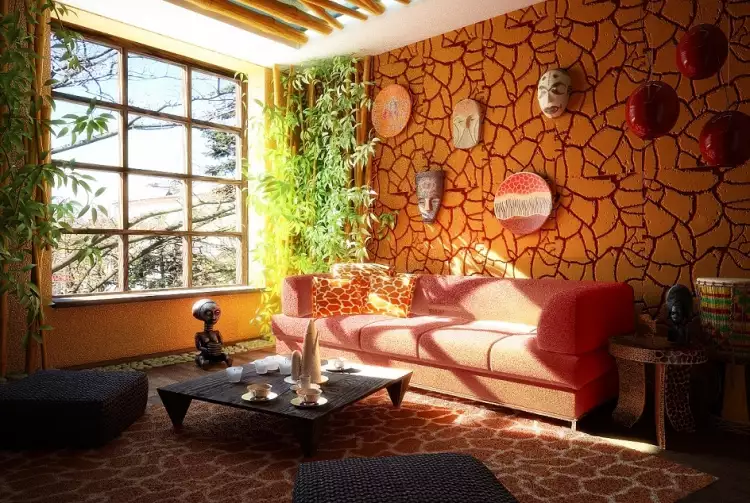 Ethnic style in interior design. Living room interior with ethnic furniture and accessories
Ethnic style in interior design. Living room interior with ethnic furniture and accessories
Ethnic style in interior design, in a general sense, includes many well-known trends, such as Scandinavian or Provencal, but due to their popularity, they are often considered separately. Ethnic style typically implies something rarer and more exotic, such as Egyptian, Moroccan, Mexican, Indian, Japanese, or Chinese styles. It is important to remember that the elements borrowed are not from contemporary culture, but from the ancient heritage of these countries.
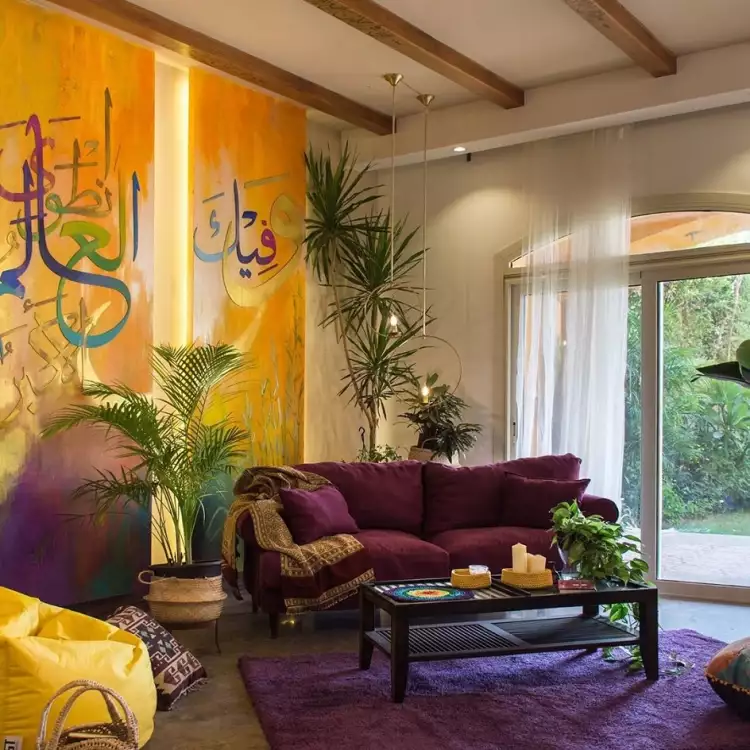 Ethnic style in interior design. Living room interior in ethnic style
Ethnic style in interior design. Living room interior in ethnic style
Key characteristics and features of ethnic style in interior design
Ethnic style in interior design is closely related to eco-style, as it recreates the features of eras when modern materials were not yet known. It is also far from luxury, using simple plaster and textiles, ceramics and wood, wrought iron without intricate patterns. Typically, millennium-old household traditions are subconsciously understood by people and associated with comfort and safety. Being in such an environment, you immediately feel at home. The following features help achieve this effect in interior design:
- Finishing materials. Floors, walls, and ceilings often serve as a backdrop for vibrant accessories and do not require detailed elaboration. Walls can be covered with uneven plaster layers and painted in a light color. Wooden beams look appropriate on the ceiling, and the floor can be tiled with terracotta, planks, or linoleum.
- Color palette. Each region has its popular shades, so the color palette heavily depends on the chosen direction. For example, Egyptian style is dominated by yellow, sandy, and brown tones, while Chinese style incorporates red and gold. In most cases, warm natural colors are used.
- Furniture. This style requires unique and expressive furniture, often resembling handmade pieces. Wicker chairs or sofas upholstered in coarse natural fabrics are a great fit. Low tables and cabinets are common in some Eastern cultures.
- Lighting. Instead of LED strips and crystal chandeliers, it is recommended to use simple glass lanterns, table lamps with terracotta or stylized Ming Dynasty bases, and fabric lampshades. A great option is the warm glow of candles and fireplaces.
- Textiles. Ethnic themes are often found among mass-produced fabrics, making textiles one of the simplest ways to give a space an exotic touch. Traditional patterned rugs, handmade bedspreads, simple curtains, including roller blinds, are commonly used.
- Ornaments. Decorations almost always feature patterns characteristic of a particular culture. Authentic patterns are often used to adorn floors, fabric items, or ceramic tiles. Ornamentation can be applied to the wall using stencils or displayed through paintings with corresponding motifs.
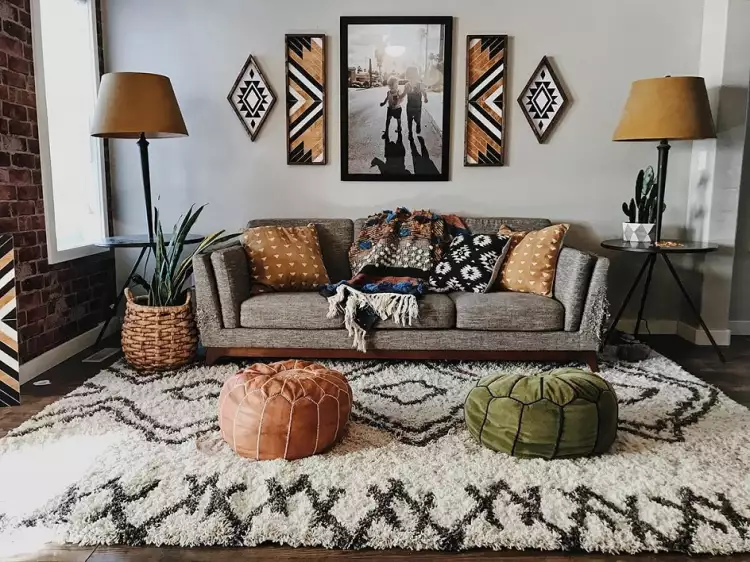 Ethnic style in interior design. Living room interior with ethnic ornaments and textiles
Ethnic style in interior design. Living room interior with ethnic ornaments and textiles
The main attention in room decoration is given to accessories. Masks, fans, animal skins, regional painted dishes, and boxes often inspire homeowners to create a suitable atmosphere. Chinese style welcomes dragon imagery and porcelain vases, while Japanese style incorporates samurai swords, drawings with hieroglyphs, and more. Accessories usually serve as accents and shape the design's ambiance.
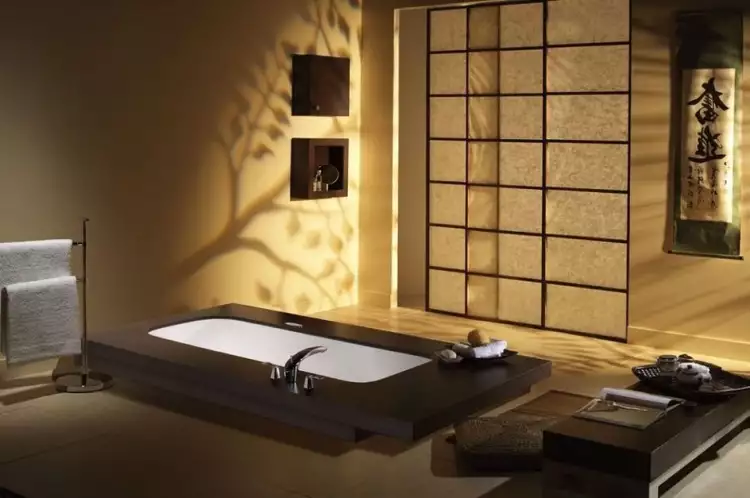 Ethnic style in interior design. Ethnic bathroom interior
Ethnic style in interior design. Ethnic bathroom interior
History of Ethnic Style in Interior Design
The idea of decorating homes with unusual items and souvenirs from other countries is closely linked to seafaring and travel, especially mass travel. It is believed that the history of ethnic style in Europe begins with the first Crusades when many people visited the Middle East. The trend also thrived during the Age of Discovery. During the colonial period, residents of European homes widely used items from India, Sri Lanka, and China.
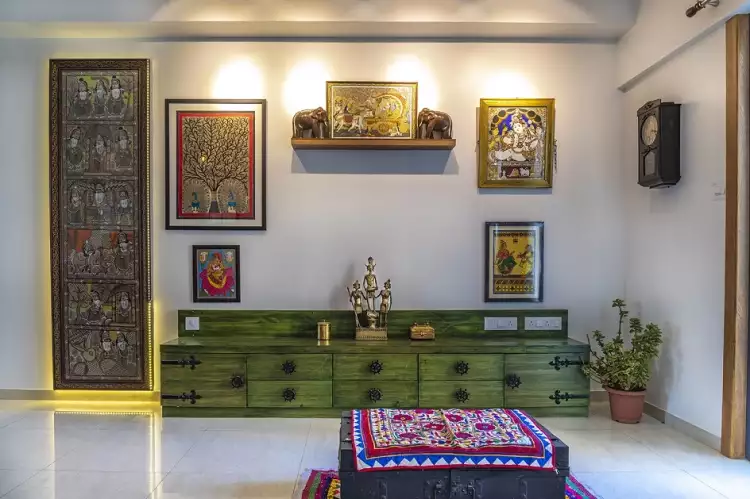 Ethnic style in interior design. Interior of an ethnic hallway
Ethnic style in interior design. Interior of an ethnic hallway
In the second half of the 20th century, tourism became increasingly accessible to more people, who were inspired by the culture and traditions of exotic countries. Many sought to bring a part of this exotic atmosphere into their homes and, at the same time, use the souvenirs they had brought with them. In the 21st century, this trend has intensified even more. Thanks to numerous TV programs and travel blogs, it is possible to learn about interesting customs from distant corners of the planet without leaving one's own country. Ethnicity is incredibly diverse, so each space ends up looking different from the others. This design is also eco-friendly and relatively easy to implement.
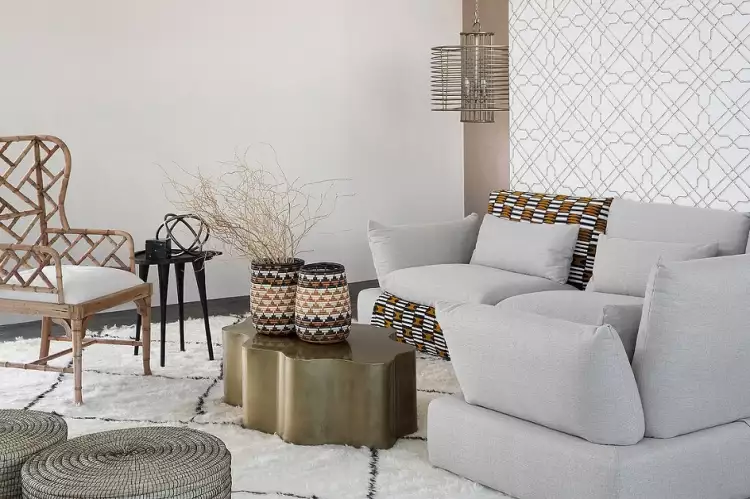 Ethnic style in interior design. Living room interior with wicker furniture in ethnic style
Ethnic style in interior design. Living room interior with wicker furniture in ethnic style
Ethnic style in interior design is now very common. Hotels, cafes, and restaurants often recreate the atmosphere of a specific era down to the smallest details to achieve an authentic ethnic feel. Another popular approach is to combine interesting elements from different cultures, such as Egyptian and Mexican. Such an ethnic mix requires good taste from the designer. However, the most common solution is simply to enliven a neutral interior with national accents to bring in new colors and originality.
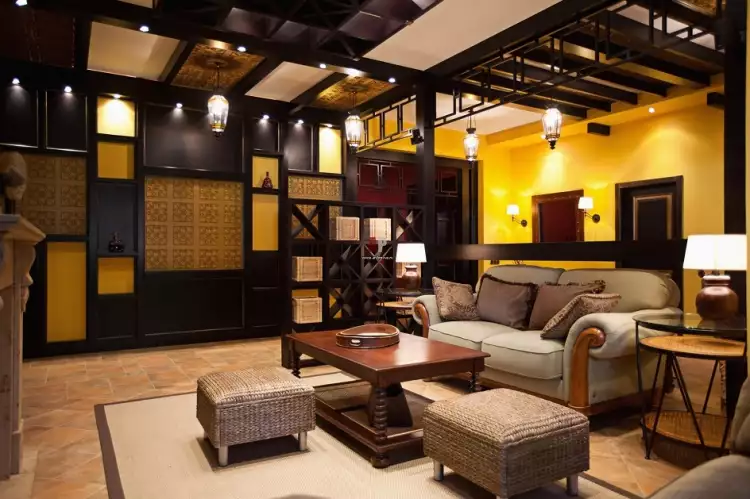 Ethnic style in interior design. Interior of an Ethnic Lounge
Ethnic style in interior design. Interior of an Ethnic Lounge
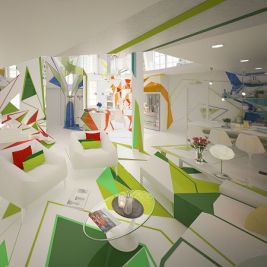 Expressionism in interior design - the style of freedom and youth
Expressionism in interior design - the style of freedom and youth  Top 10 Most Famous Architects - The Greatest Master Builders in Human History
Top 10 Most Famous Architects - The Greatest Master Builders in Human History  Giovanni Guida is an Italian artist-innovator and master of grattage
Giovanni Guida is an Italian artist-innovator and master of grattage  Mythological genre is the captivating world of ancient myths and legends
Mythological genre is the captivating world of ancient myths and legends  Animalism is a popular genre in painting from prehistoric times
Animalism is a popular genre in painting from prehistoric times  Allegory: Essence, Distinctive Features, History in Art
Allegory: Essence, Distinctive Features, History in Art 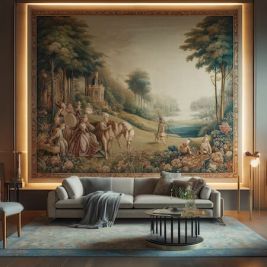 The Renaissance of Historic Tapestries
The Renaissance of Historic Tapestries  Orders of France - from the Middle Ages to the present day
Orders of France - from the Middle Ages to the present day  László Moholy-Nagy was a brilliant artist, a great experimenter, and an outstanding art theorist
László Moholy-Nagy was a brilliant artist, a great experimenter, and an outstanding art theorist  Edward Munch—the creator of nightmares and the singer of anxiety
Edward Munch—the creator of nightmares and the singer of anxiety